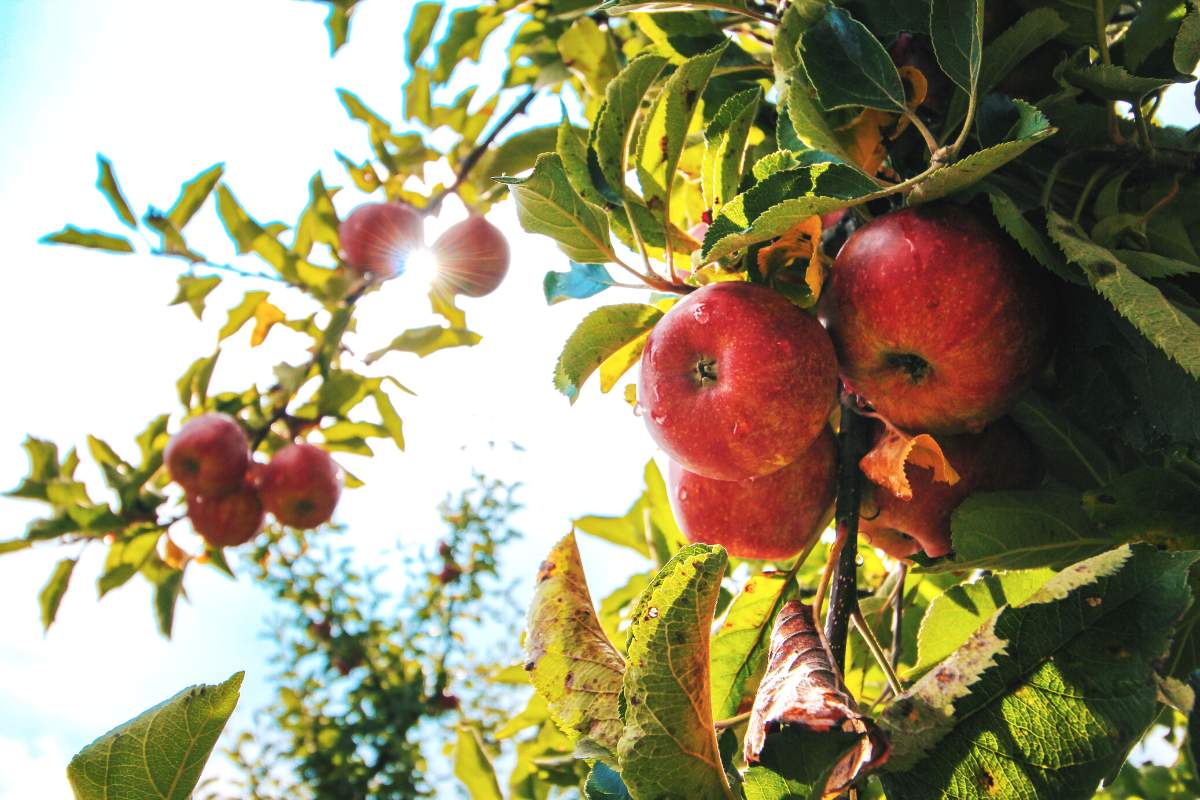This state is influenced by both hot and cold fronts from different directions, with cold winters with heavy snowfall and warm summers. Because the soil in this state is mostly clay, silt, and sand, certain types of fruit trees in Michigan thrive and bear good fruits. With that in mind, here are some fruit-bearing trees you can plant in your yard in the state of Michigan!
14 Fruit trees in Michigan
Michigan is located in the northern part of the United States and has a lot to offer. It’s a place where you can experience all four seasons, allowing certain plants to thrive.
1. Quince Tree
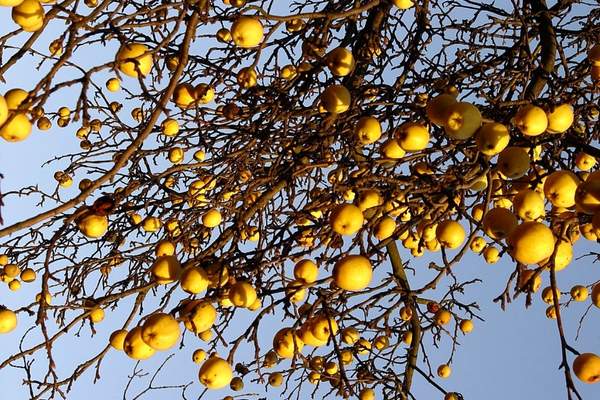
Scientific Name: Cydonia oblonga
The quince tree is a lovely and useful addition to any garden. It grows in Michigan and is tough enough to withstand cold winter temperatures and snow.
You can eat the fruits of the quince tree raw, but it’s difficult to do so, so most of them are cooked. Quince tree blooms in late winter or early spring with beautiful red, pink, orange, and white flowers, followed by light green fruits that ripen to golden yellow.
2. American Persimmon Tree
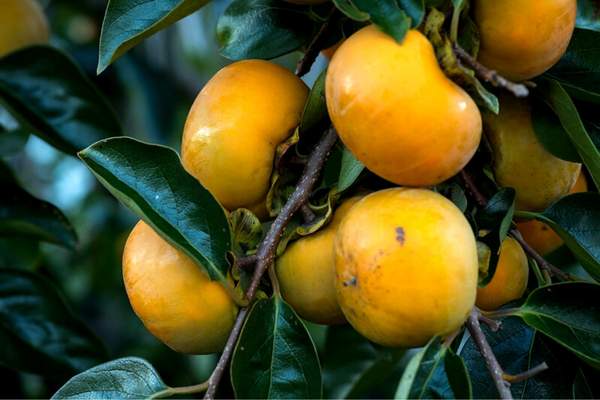
Scientific Name: Diospyros virginiana
The American persimmon tree is a lovely and adaptable plant that can be grown in various climates. It’s commonly used as an ornamental plant, but it also produces fruit that can be eaten raw or cooked.
These deciduous trees can grow up to 30 feet tall and have flowers that bloom from May to June. They thrive in Michigan, preferring sandy soil with good drainage and can withstand drought conditions.
3. Persian Walnuts
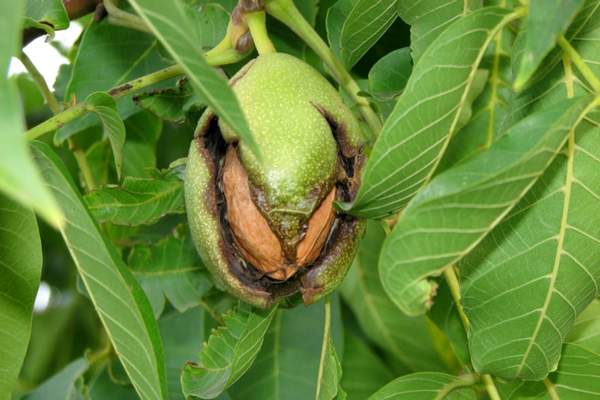
Scientific Name: Juglans regia
Persian walnuts are popular among gardeners and fruit enthusiasts alike. These trees can grow to heights of up to 26 feet and produce abundant crops of nuts suitable for eating or baking.
These beautiful trees thrive in USDA zones 5-8, but can be grown successfully in other areas with proper care. They prefer direct sunlight but will tolerate partial shade if necessary. Persian walnuts thrive in rich, well-drained soil with plenty of organic matter added for nutrients.
4. Nectarine tree
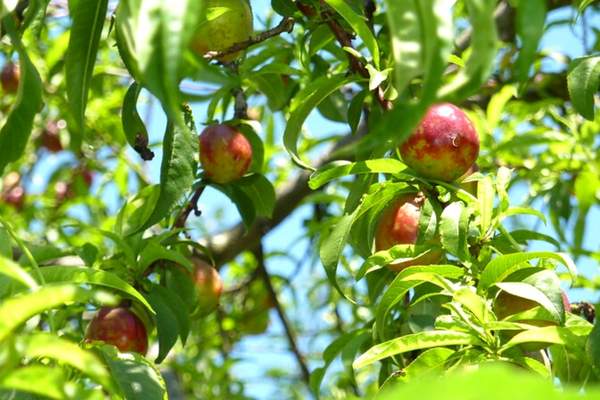
Scientific Name: Prunus persica
The nectarine tree is a popular fruit tree that grows in Michigan. It has lovely flowers and delicious, juicy fruit. This tree can grow up to 25 feet tall and has beautiful pink flowers that cover the canopy and bloom in the spring.
Nectarines are one of the best fruits to grow in Michigan because they’re resistant to cold weather and pests, so they won’t require much attention from you if proper growing conditions are met.
5. Apple
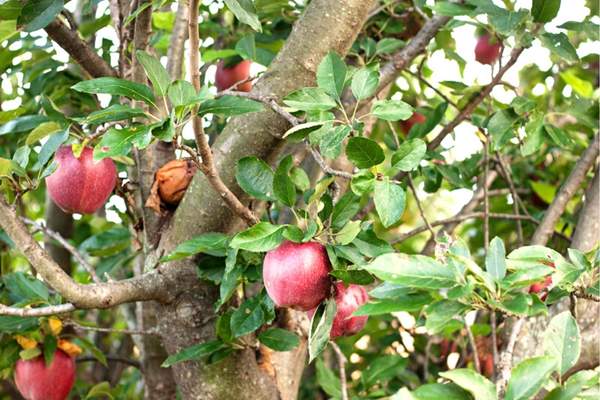
Scientific Name: Malus pumila
Apple trees are beautiful, delicious, and good for the environment. They can grow in Michigan’s climate and require little care. These amazing trees need loamy soil with a neutral pH, plenty of space, and exposure to full sun.
They’re very popular among gardeners because they’re simple to grow and harvest. Apple picking season is usually between September and October, when all of the apples are ripe and ready to eat.
6. Cherry
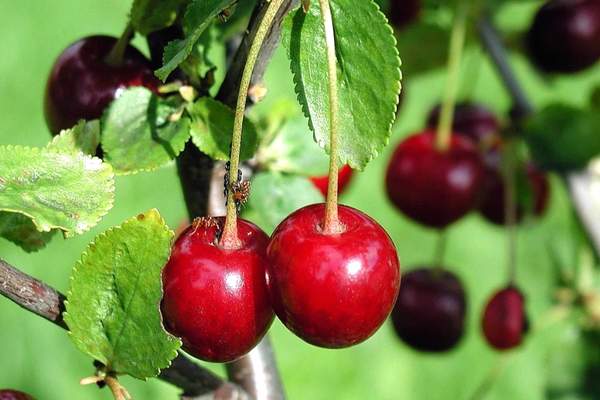
Scientific Name: Prunus avium
Cherry trees are a beautiful and hardy addition to any Michigan garden. Their delicious fruit, lovely blossoms, and appealing shape make them a popular choice among homeowners. They thrive in zones 5 through 7 (Michigan is in zone 5).
Cherries require a well-ventilated area, full sun, and well-drained soil. You should also prune them annually to increase fruit yield and remove dead wood from disease-prone areas of the tree.
7. Peach
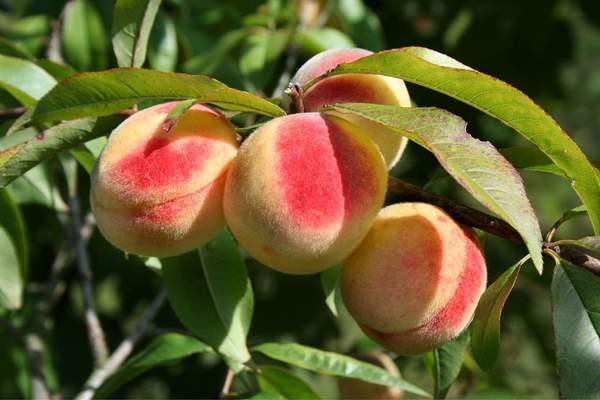
Scientific Name: Prunus persica
Peaches are a soft, fuzzy fruit with a sweet flavor that’s also simple to grow at home in Michigan.
Peaches grow on trees that can grow up to 25 feet tall and begin bearing fruit in their third year. It also has a cream or pinkish-white flowers that appear in early spring. It needs 6 to 8 hours of direct sunlight per day and should be grown in well-drained, fertile soil.
8. Chinese Chestnut
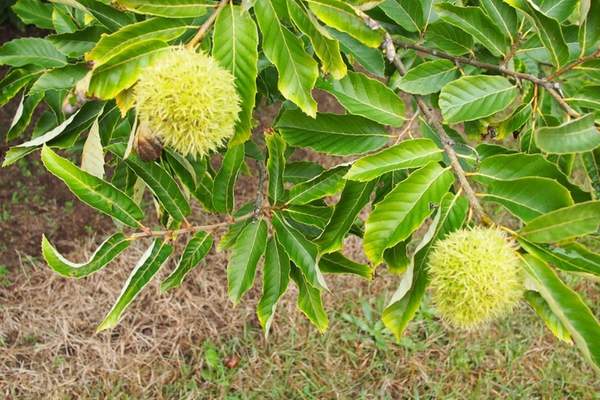
Scientific Name: Castanea mollissima
Chinese chestnut trees are a wonderful addition to Michigan gardens. They’re hardy, beautiful, and can grow in a variety of environments. The flowers of Chinese chestnuts are small and pale yellow or cream in color, and the fruit is grayish brown and fuzzy.
The fruit contains edible nuts that are also beneficial to wildlife habitats. The chestnut season lasts from mid-September until the nuts ripen in November. The trees require well-drained soil and full sun, so plant them in an area where they’ll get plenty of sunlight throughout the day.
9. Fig
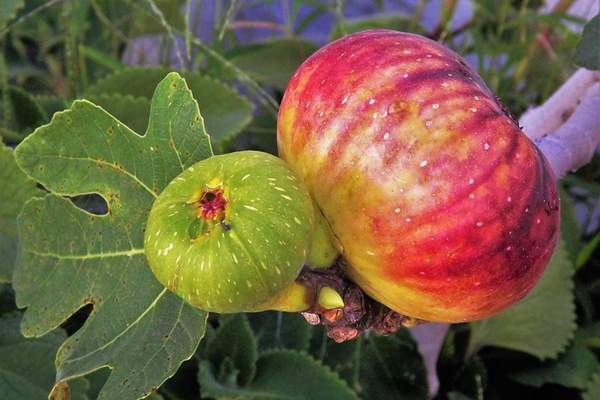
Scientific Name: Ficus carica
The fig tree is a popular fruit tree that’s easy to grow in Michigan. It bears fruit ranging in color from yellow to purple from April to November. It can reach a height of 10-30 feet and requires full sun to thrive.
The trees require full sun and fertilizer every four weeks during the summer and spring seasons. The planting of these trees in the spring or early fall would also be beneficial.
10. Paw Paw Tree
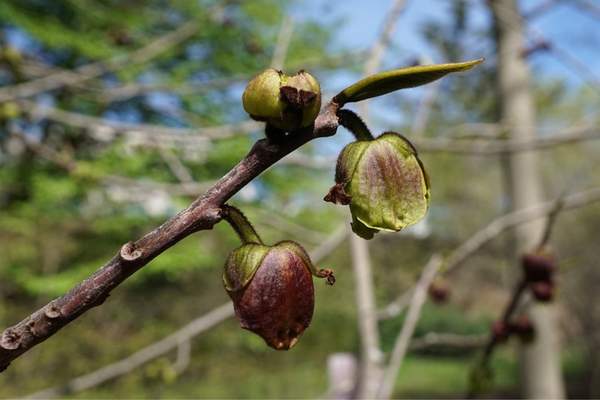
Scientific Name: Asimina triloba
The Paw Paw tree is a large fruit tree that grows at a medium rate and can be planted in Michigan. In ideal conditions, it can reach a height of 40 feet and blooms a dark reddish purple in early spring.
Although Paw Paws don’t need much attention as long as they’re planted in an area with little competition for sunlight or water, they do need to be fertilized twice a year after planting to encourage growth and root development.
11. Hackberry Tree
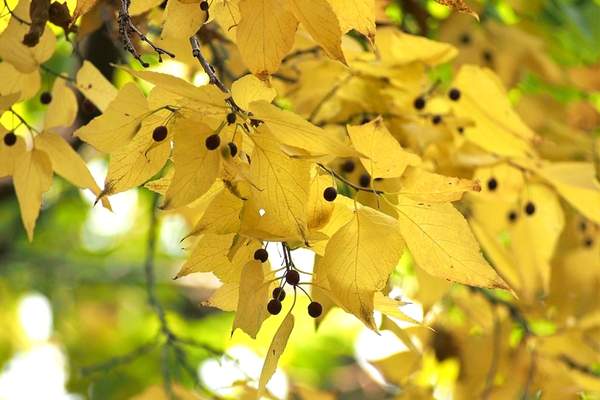
Scientific Name: Celtis occidentalis
The hackberry is a large tree that grows quickly in Michigan and can reach heights of 60 to 70 feet when mature. This deciduous tree sheds its leaves in the winter and blooms with greenish-white flowers in the spring.
These fruit bearing trees thrive in clay, sand, and loamy soils and grow best in rich, well-drained soil. They prefer full sun or partial shade for the majority of the year and require weekly watering during the dry season.
12. Hazelnuts
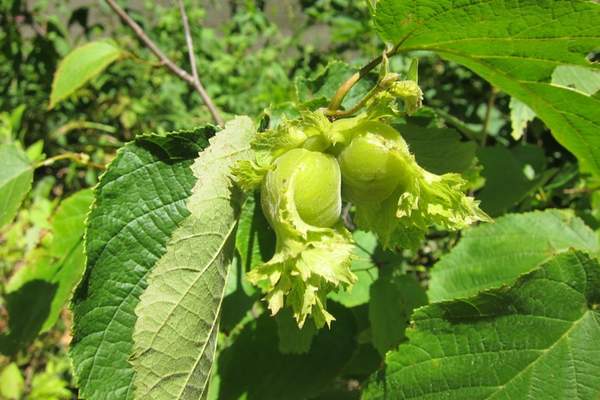
Scientific Name: Corylus americana
Hazelnut trees are drought tolerant and can be grown in Michigan. The trees require well-drained, rich sandy or clay soils with full sun exposure to thrive in its habitat.
This tree’s flowering season lasts from late February to April, and it bears fruit from late summer to early fall. The trees will begin producing nuts three years after planting and can grow to be 20 feet tall.
13. Pear
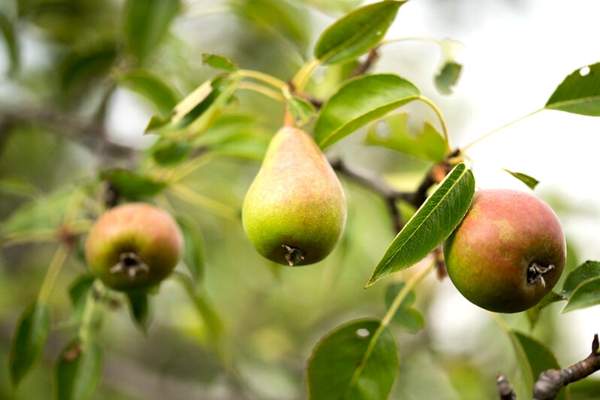
Scientific Name: Pyrus communis
The pear tree is a deciduous fruit tree native to Michigan that requires full sun to produce a large number of fruits. Flowers bloom from late February to mid-April, and fruits ripen from July to October. It takes three to ten years for a pear tree to mature into an adult tree capable of producing fruit.
They thrive in full sunlight and loamy, sandy soils that drain well while retaining moisture. This makes them ideal for growing in Michigan’s climate because they don’t require much maintenance once established.
14. Mulberry Tree
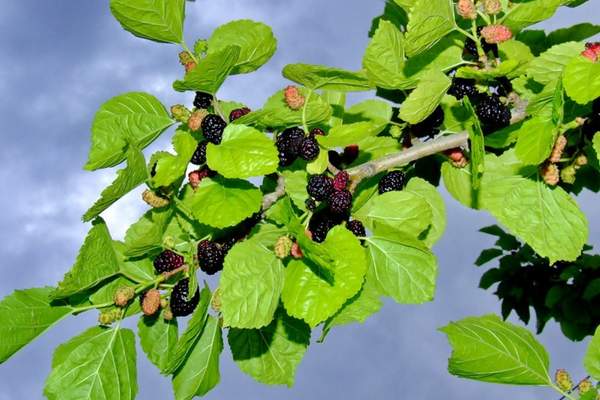
Scientific Name: Morus alba
Mulberry trees are hardy trees with a few special requirements, but they’re ideal for people looking to plant a fruit tree in Michigan. These trees thrive in full sunlight and well-drained, slightly acidic soil.
The mulberry tree can grow up to 30 feet tall and has dark green leaves. It blooms in late spring or early summer and bears fruit in late summer or early fall. When fully ripe, the fruit is red or purple and has a sweet flavor.
